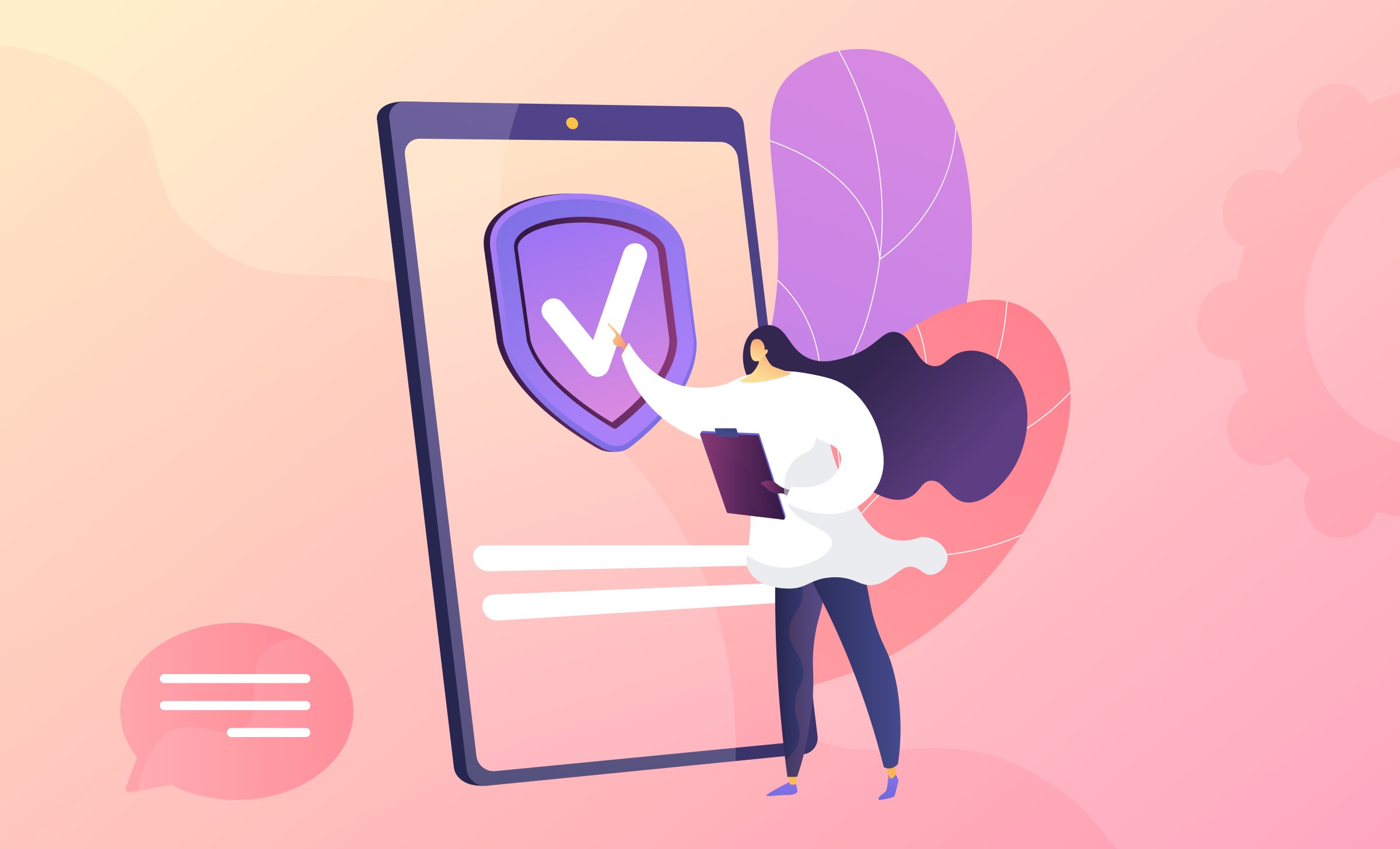Mobile apps are an integral part of many businesses. However, their use is associated with certain risks. Modern analytics confirms that more than 95% of companies have faced various mobile threats in one way or another. When building apps, developers should aim for not only unique features and experiences but also the highest level of mobile app security to protect their users, whether individuals or businesses, from data theft.
Modern realities are such that creators are forced to release new tools as quickly as possible to avoid losing the audience’s interest and use open-source components. With insufficient care, this approach can make an app more vulnerable to various attacks and threats.
Striving to update your product regularly, you shouldn’t forget about the importance of keeping it secure. In this article, we will tell you about modern requirements for protecting mobile apps, generally accepted standards, and ways to detect vulnerabilities.
Table of Contents
Why Is Application Security Important?
Often, creators focus on solving market problems. They need to build the best interface, ensure the product’s stability, and market it correctly. Our article “How to Market an App Like a Pro” is devoted to building marketing strategy, so check it out if you have questions about it.
Behind all these complex tasks, there is a risk to overlook the possible vulnerabilities. According to Acronis forecasts, this year, the cost of one data breach might reach $5 million. Such horrific results force developers to look closely at application security management and follow new technologies and standards in this direction.
Here is a list of reasons why application data security is critical:
- Identifying and fixing weaknesses makes it impossible for attackers to combine non-critical vulnerabilities to deal more damage.
- Regular vulnerability monitoring reduces risks and the amount of possible harm.
- Preventive measures are cheaper than a reactive approach and remediation.
- As the popularity of your product grows, so does the risk of possible attacks.
Neglecting application intelligence and mobile product security standards threatens to lose money, reputation, and the business as a whole.
Mobile App Security Standards
The acts governing the prevention and resolution of mobile app security issues you must comply with differ depending on your industry. The main standards are:
- ASVS by OWASP. It contains a list of 14 requirements for secure application development and provides a framework for technical security verification.
- NIST 800-218. This document contains 19 requirements for forming the so-called Secure Software Development Framework.
- ISO 27034. It describes methods and tools for ensuring secure development and, in particular, the formation of the Application Normative Framework.
- CIS Control 16. Its 14 controls govern application software security throughout the whole product life cycle.
- PCI DSS. It’s a mandatory standard of 14 requirements that apps that work with user banking data must adhere to.
Moreover, you should also stick to the application policy recommendations in your particular sector. Here are just a few examples:
- marketing: GDPR and CCPA regulations;
- fintech: PSD2, ePrivacy, and Cybersecurity regulations;
- hr: EEOC, Fair Labor Standards Act, and FMLA;
- healthcare: HIPPA, EU Regulation 2017/746 (IVDR), etc.
Typically, the most intense application security monitoring is carried out in healthcare and life insurance, but many other industries also have unique controls.
Application Security Requirements
To comply with the standards described above, you need to follow their requirements regarding securing mobile apps. Here are just a few of them:

Some of these database security best practices interact and refer to each other. For example, PCI DSS requires developers to implement the threat protection methods described in OWASP Top 10 (web or mobile).
How to Detect Mobile App Vulnerabilities?
You should secure application development at the start since it’s better to prevent attacks rather than deal with their consequences. To identify vulnerabilities, you can implement the following mobile app security best practices:
- Vulnerability scanning. Various scanners automatically analyze the product and find weaknesses by comparing them with lists of common vulnerabilities.
- Penetration testing. This technique mimics the attacks carried out by ethical hackers and looks for possible penetration routes through loopholes.
- Posture assessment. With its help, you evaluate the current state of protection and identify data that could potentially be compromised.
- Risk assessment. It considers all the components and even the people involved in the process to determine the risks.
You can use supply chain tests and static or dynamic application security testing instruments when looking for problem areas. Test authentication and encryption to understand users’ privileges and access and understand fundamental questions like, “How is data encrypted while using mobile applications?”
Application Security Best Practices Checklist
The standards mentioned above are aimed at securing mobile applications from all sides. Here are some more of our expert recommendations to help you protect your users:
- Know your assets
To quickly find and fix a breach, you need to know what software is used in your app, which ones are open source, which dependencies they have, etc.
- Assess threats
Determine which attacks are most likely to happen, how hackers can get into your product, and what is the probability of a bad outcome.
- Update software
Everything you use to develop your products should be regularly updated, whether purchased tools for, for instance, ASO keyword ranking or open community development.
- Prioritize operations
The list of threats and vulnerabilities is huge. Assess and prioritize them to eliminate the most extensive or likely problems first.
- Encrypt traffic
If you cannot securely encrypt all traffic, you will easily become a target for hackers. Use hashing, SSL certificates, HTTPS, and other tools.
- Restrict access
Each employee should have access only to the segments they need; for it, you can implement mobile app authentication best practices in your production. If attackers can take over their accounts, it will avoid leaking critical data.
The above standards should be followed when developing products for different operating systems and devices. The article “How to Sync Apps On iPhone And iPad?” will teach you about working with apps for various Apple devices.
Bring Your App Security to Perfection
When developing an app security strategy, keep in mind that nothing is unhackable. Over time, methods have weakened and become obsolete, so attackers can find the key to everything. Therefore, your work on protection must be comprehensive and ongoing.
You can use automated vulnerability-finding systems to have time to focus on your core business and marketing tasks. However, you should not stop at a single approach as it makes even the best technique less effective. Use several methods at once to eliminate the possibility of hacking to the maximum.
Never stop there: Your system should be checked regularly and receive the necessary updates. Do vulnerability scans as often as possible. New threats appear literally every week, so you should often look for weaknesses. The requirements for performing a scan can vary depending on the standard, framework, and auditor you choose. Most often, you need to do scanning monthly or quarterly; less often — every week.




